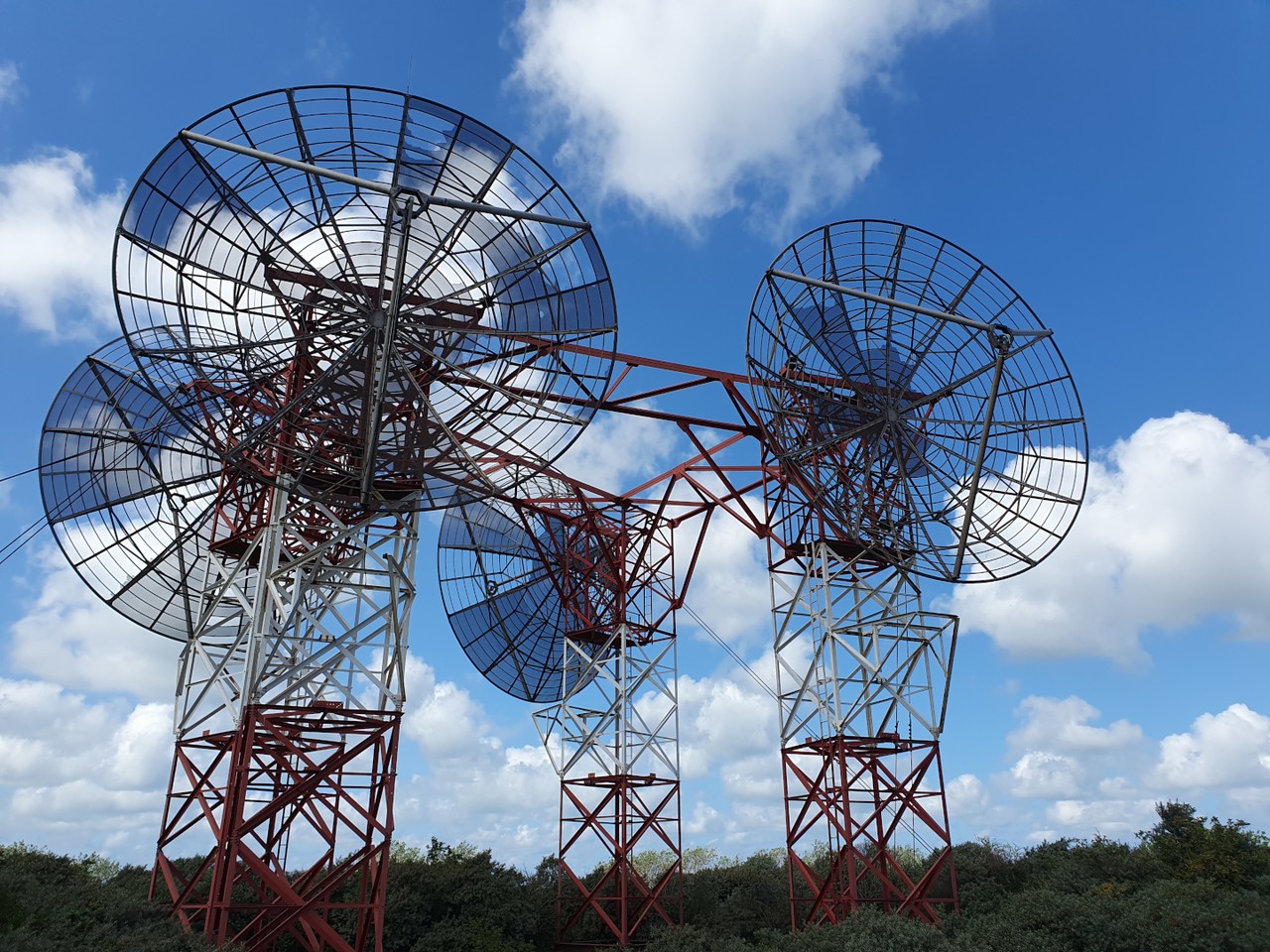During the Cold War, the Royal Netherlands Navy took over the complex. A striking remnant from that period is the large parabolic antennas, part of an American radar communication station from the 1960s, the so-called troposcatter. In the era before satellite communication, this system made it possible to establish a long-distance connection from Germany to the United States. Thus, in this dune area, you can discover four historical layers — or four phases — of military use.
After the war, the area was named Vinetaduin, after the German coastal battery. Today, it is a closed, protected nature reserve and also holds the status of a national monument. The tunnel system is only accessible during guided tours by the Zuid-Hollands Landschap, where the unique story of heritage and nature is told. In the two former German ammunition bunkers named “Hamburg” and “Bremen,” you’ll find the Dutch Coastal Defense Museum, where you can learn everything about the war in Hoek van Holland.
At the foot of the dune, near the beach, once stood a row of detached pavilions. The Heijstek family, who lived in Huize Rielo, received notice in early June 1940 that their home was being requisitioned by the occupiers. Six soldiers took up residence there. The family had wisely stored part of their furniture elsewhere. Midway through the war, the wooden pavilions were demolished — only Rielo remained. Immediately after the German capitulation in May 1945, the head of the household returned to find a lonely house in a devastated landscape.
He demanded the return of his neglected and plundered home from the remaining German officer. The man left, but the next day, celebrating English soldiers took his place. It took some effort to get them out, after which the Heijstek family never left again. In those first days of liberation, he made a special trade with a German soldier from Vineta — for a few cigarettes, he received the binoculars once used to scan the sea for Allied ships.
A bit further along the Strandboulevard, you can see the distinctive shape of a concrete observation post. This was the command center of Marine Artillery Abteilung 205, responsible for six coastal batteries of the German Kriegsmarine in Hoek van Holland, the island of De Beer, and Voorne. The bunker was called the Marko-Stand, short for Marine Kommandostand. Behind the observation slit, observers used optical instruments to track Allied attacks and coordinate battle operations.
Directly behind the command bunker are four large crew bunkers connected by an underground tunnel system. To prevent accidents and vandalism, the entrances have been sealed. This also provides peace for the bats that hibernate there.
